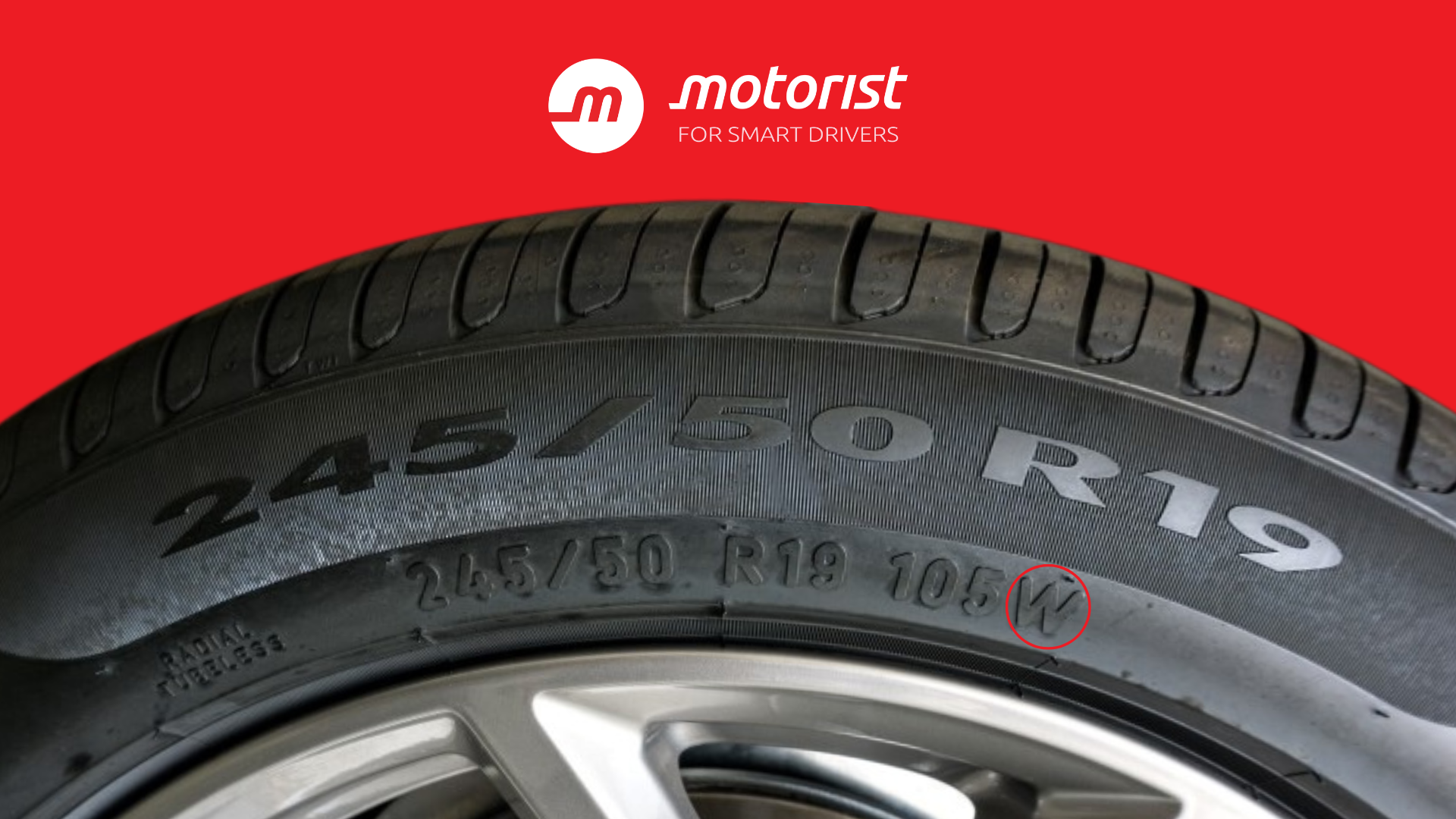Tyre speed ratings explained: chart, rating letters & what they mean
Tyre speed ratings are a critical aspect of vehicle safety and performance. These ratings, represented by specific letters, indicate the maximum speed a tyre can safely sustain under load. While many drivers may overlook this detail, understanding and choosing the right speed rating for your tyres is crucial for ensuring optimal performance and safety on the road. This guide will provide an in-depth explanation of tyre speed ratings, their significance, and how to interpret the ratings for your vehicle.
What are tyre speed ratings?
Tyre speed ratings are standardized symbols that appear on the sidewall of every tyre, indicating the maximum speed the tyre can safely handle. These ratings are determined by the tyre’s construction, materials, and the manufacturer’s rigorous testing procedures. Speed ratings range from the low end, such as an “L” rating for 120 km/h, to the high end, such as a “Y” rating for speeds up to 300 km/h.
The speed rating is not just a number but a crucial factor that affects the tyre’s performance, handling, and overall driving safety. It’s important to note that the speed rating assumes that the tyre is properly inflated, in good condition, and carrying the appropriate load.
The tyre speed rating chart
Understanding the various speed ratings is key to selecting the right tyre for your vehicle. Here’s a detailed chart of common tyre speed ratings:
- L: 120 km/h – Typically used for off-road vehicles or temporary spare tyres.
- M: 130 km/h – Often found on commercial vehicles.
- N: 140 km/h – Commonly used in temporary spare tyres.
- P: 150 km/h – Used in rare tyre types, including some commercial tyres.
- Q: 160 km/h – Usually seen in winter tyres for passenger vehicles.
- R: 170 km/h – Commonly found in heavy-duty light trucks and off-road vehicles.
- S: 180 km/h – Standard for family sedans and vans.
- T: 190 km/h – Common in family sedans, vans, and some trucks.
- U: 200 km/h – Less common, found in higher performance sedans.
- H: 210 km/h – Often seen in sport sedans and coupes.
- V: 240 km/h – Used in sports cars and high-performance sedans.
- Z: Above 240 km/h – Designated for very high-performance vehicles, now typically replaced by W and Y ratings.
- W: 270 km/h – Found in exotic sports cars and high-performance vehicles.
- Y: 300 km/h – Reserved for ultra-high-performance vehicles.
Importance of tyre speed ratings
Choosing the correct tyre speed rating is essential for several reasons:
Safety: A tyre with a lower speed rating than your vehicle’s maximum speed capability can lead to tyre failure, especially at high speeds. This failure could result in loss of control, leading to potentially catastrophic accidents.
Handling and Stability: The speed rating influences the tyre’s grip, cornering stability, and overall handling characteristics. Higher speed ratings typically mean better handling, as the tyres are designed to perform optimally at higher speeds.
Compliance with Vehicle Specifications: Car manufacturers recommend specific speed ratings for tyres to match the vehicle's capabilities. Using tyres with a speed rating lower than recommended can void warranties and may not comply with road regulations.
Longevity: Higher speed-rated tyres often have a softer rubber compound for better performance, which can lead to faster wear. However, these tyres provide better handling and safety at high speeds.
How to read tyre speed ratings
Tyre speed ratings are typically found after the load index on the tyre’s sidewall. For example, if the tyre size is marked as "225/45R17 94H," the "94" represents the load index, and the "H" represents the speed rating.
- Load Index: This number indicates the maximum load the tyre can support.
- Speed Rating: The letter following the load index represents the maximum speed the tyre can handle.
In this example, "H" signifies that the tyre can safely operate at speeds up to 210 km/h under optimal conditions.
Selecting the right tyre speed rating
When choosing tyres, it’s essential to consider your driving habits:
- City Driving: If you mainly drive in urban areas with speed limits under 120 km/h, a lower speed rating like "S" or "T" might suffice.
- Highway Driving: For regular highway use, a tyre with a "H" or "V" rating is more appropriate, offering better performance at higher speeds.
- High-Performance Driving: If you drive a high-performance vehicle or frequently drive at high speeds, consider tyres with a "W" or "Y" rating for maximum safety and performance.
Tyre speed ratings are more than just letters on the sidewall; they are crucial indicators of your tyre's capabilities. By understanding these ratings, you can make informed decisions that enhance your vehicle's safety, performance, and longevity. Always choose a tyre that meets or exceeds your vehicle manufacturer’s recommended speed rating, and ensure it aligns with your driving needs.
Read More: Do you need EV-specific tyres? Here’s what you should know
I want to find the highest selling price for my car within 24 hours!
Download the Motorist App now. Designed by drivers for drivers, this all-in-one app lets you receive the latest traffic updates, gives you access to live traffic cameras, and helps you manage vehicle related matters.

